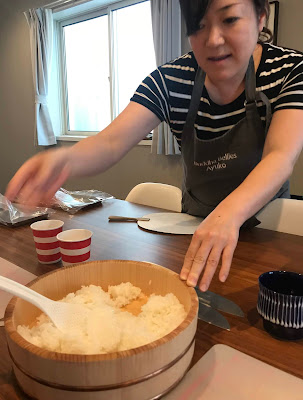Inside Rosebank Fellowship
 If you've noticed it's quiet in Hackpackerstan lately, it's because I was lucky enough to receive the Rosebank Fellowship. What kind of artsy nonsense is that, you ask oddly channelling Andrew Bolt. For me it was three weeks staying in a 19th century cottage owned by Mary Delahunty to work on my novel.
If you've noticed it's quiet in Hackpackerstan lately, it's because I was lucky enough to receive the Rosebank Fellowship. What kind of artsy nonsense is that, you ask oddly channelling Andrew Bolt. For me it was three weeks staying in a 19th century cottage owned by Mary Delahunty to work on my novel.It's the first fellowship/residency/retreat I've done so I was daunted by three weeks in the bush with only my manuscript to keep me sane. Luckily I could check in with my co-fellow, the mighty poet Andy Jackson. And I also sought advice from folk who'd done this kind of thing before. The best advice? Bring DVDs, because after a day bent over the keyboard you'll need some easy entertainment.
 Another good piece of advice was that you'll go on a lot of walks. When I heard this I saw myself on a residency on a travellator ambling around for hours with little pen to paper, but the a stroll can be a useful writing tool. I assumed I'd be rolling out of bed and hitting the desk raring to churn out 10,000 words a day, but some days you can't find a way into the book or you write yourself into a corner the day before. That's where the walks come in.
Another good piece of advice was that you'll go on a lot of walks. When I heard this I saw myself on a residency on a travellator ambling around for hours with little pen to paper, but the a stroll can be a useful writing tool. I assumed I'd be rolling out of bed and hitting the desk raring to churn out 10,000 words a day, but some days you can't find a way into the book or you write yourself into a corner the day before. That's where the walks come in.There were two kinds of walks: the puzzler and the structural redraft. The puzzler was a short stroll down to the main road when you have a small block - does that scene really play out that way? Or how would that character handle grief? The structural re-draft was an hour plus heading up into the Cobaw State Park often involving drinking water and usually wrestling with big issues like re-telling a chapter from another perspective, junking scenes I was attached to and how to introduce zombies into a realist Australian novel. The advantage of the latter walk is that you see plenty of fauna that you can ask for advice on plot and character development. Kangaroos can be the harshest critics - if they don't like it they just hop off.

My other madness-inducing practice was blind re-drafting. This means getting a chapter reviewing it, maybe making some notes (I had scene cards to fall back on), but basically re-starting it as a blank document. It was like walking into a familiar room and noticing an object you'd never seen before then trying to work out if it was interesting or useful to your story. Some of these new ideas are bound to be useless, but you can't tell until you pick up that new object and try it out. It was a good way to reinvigorate the manuscript. And there's no way I could have done such a comprehensive re-draft without three dedicated weeks.
The Rosebank Residency is made possible by the generosity of Mary Delahunty along with the Sidney Myer Fund and Helen Macpherson Smith Trust, and is administered by the Victorian Writers’ Centre. Applications for 2011 open in August this year.




Comments
Post a Comment